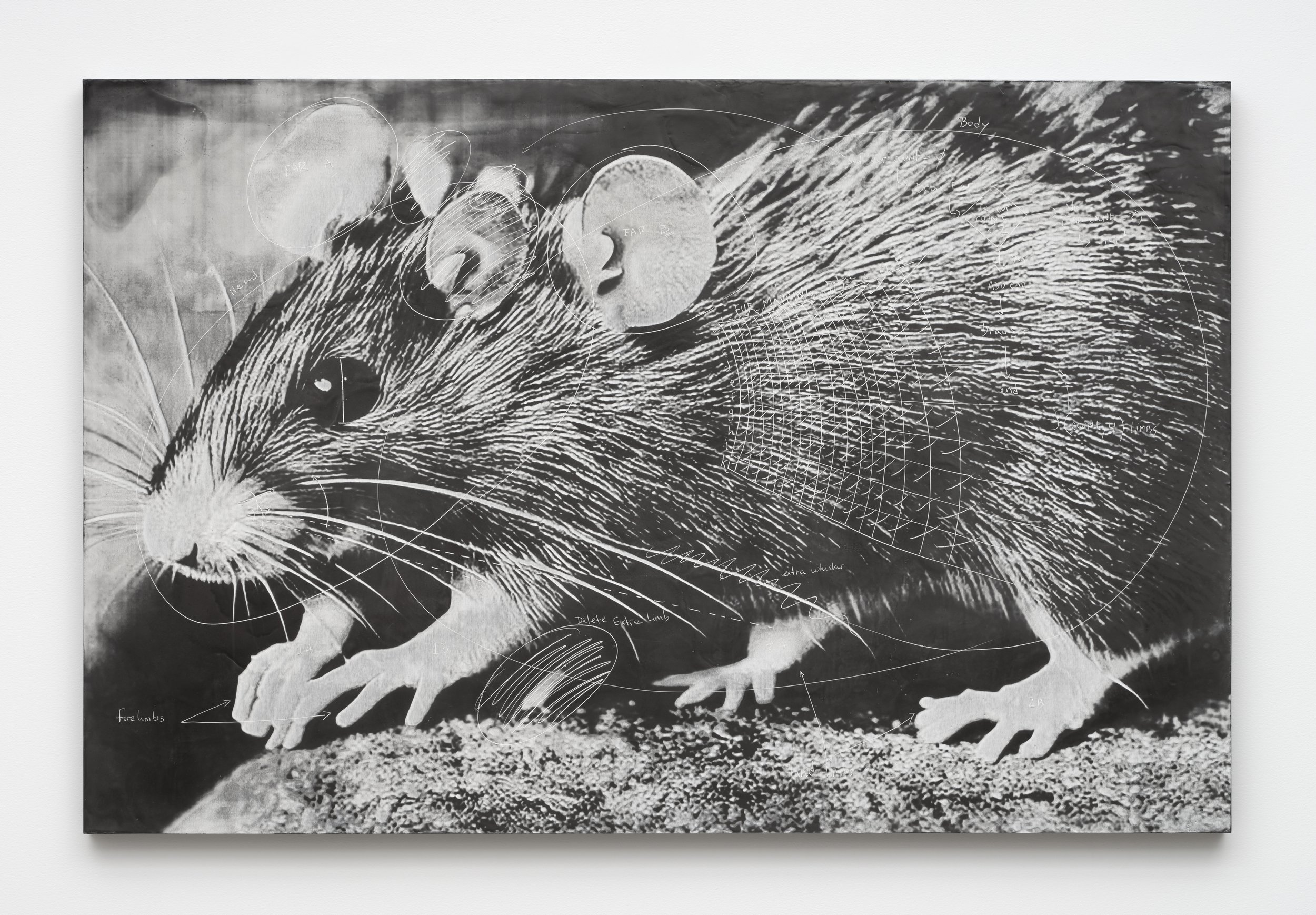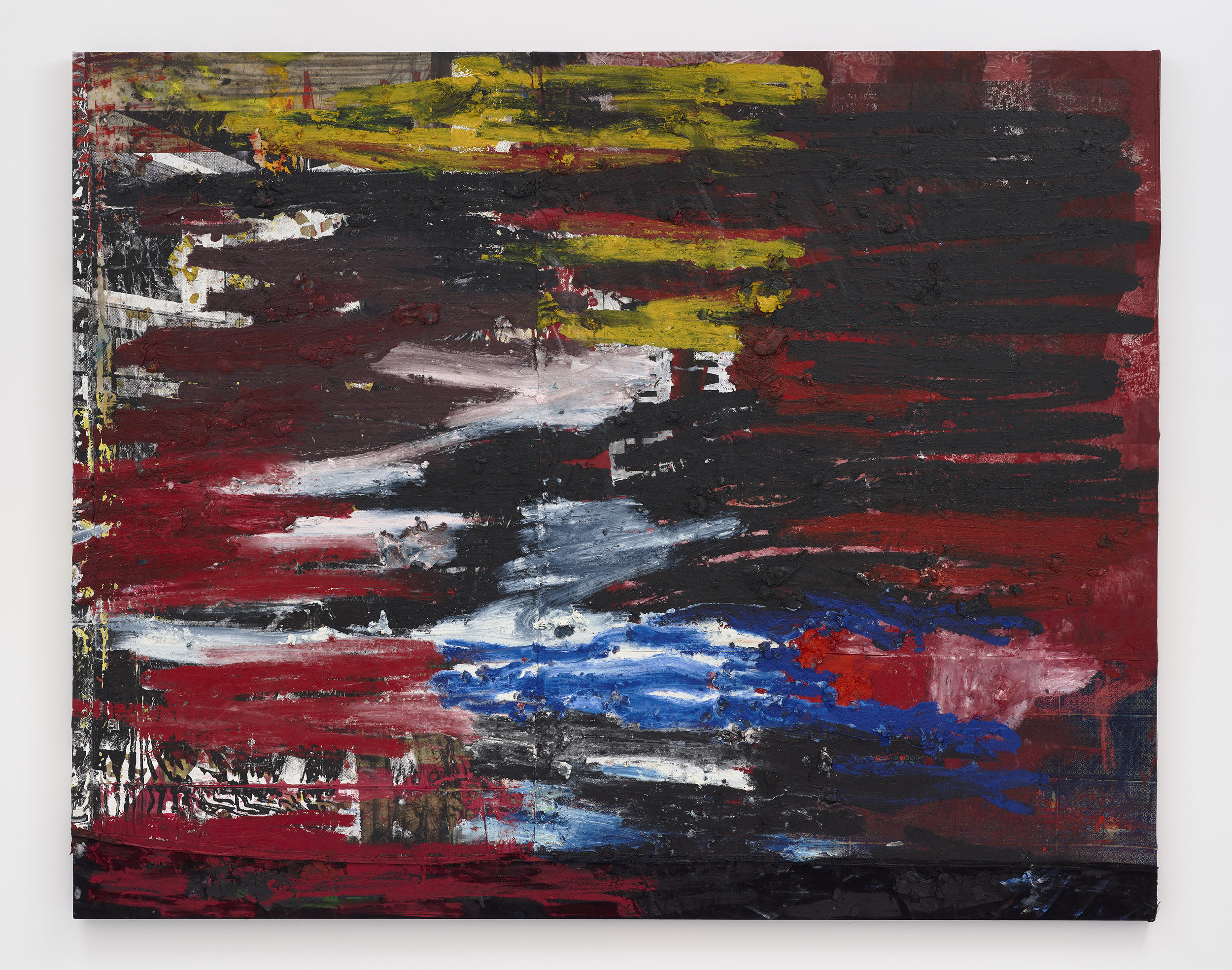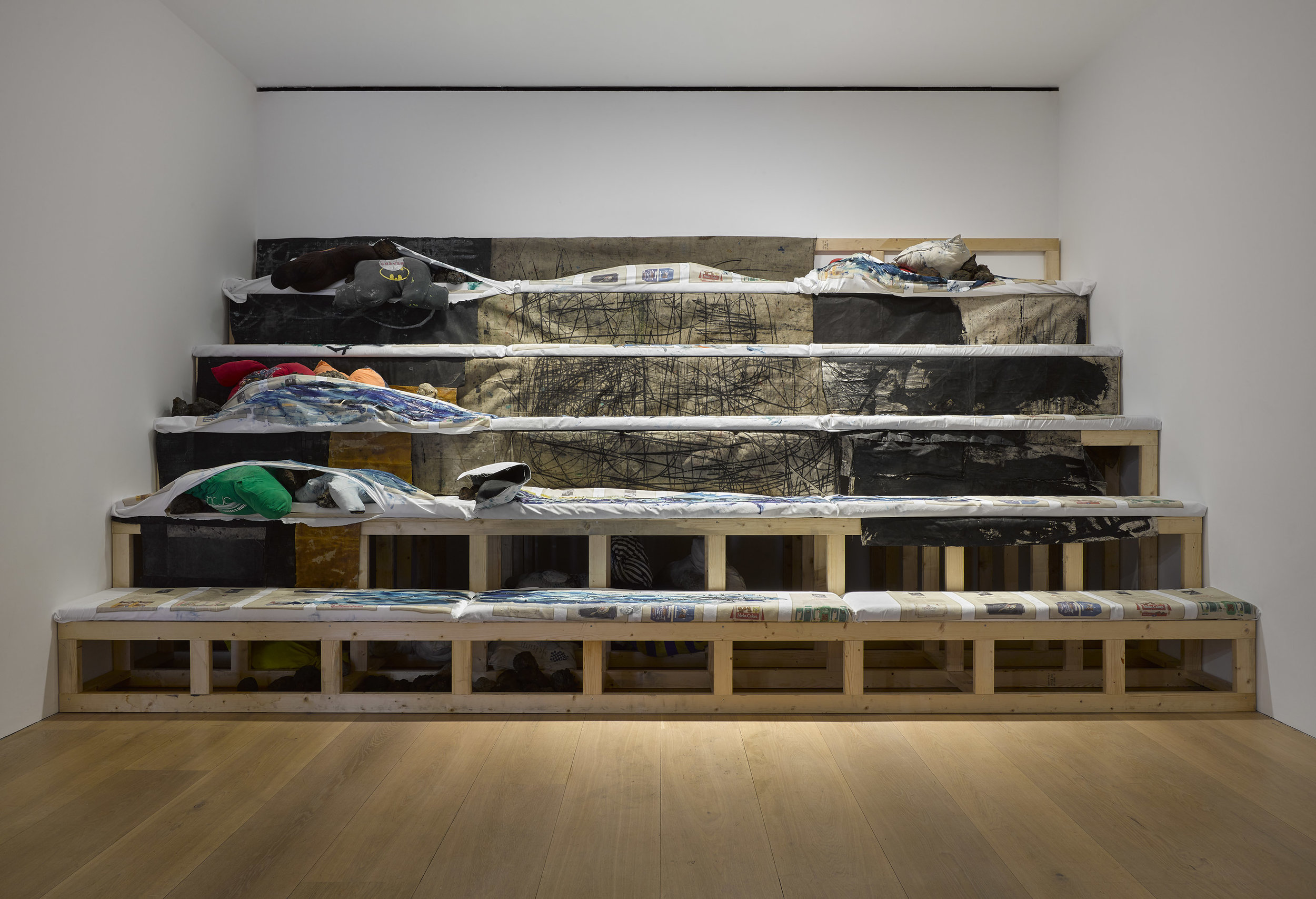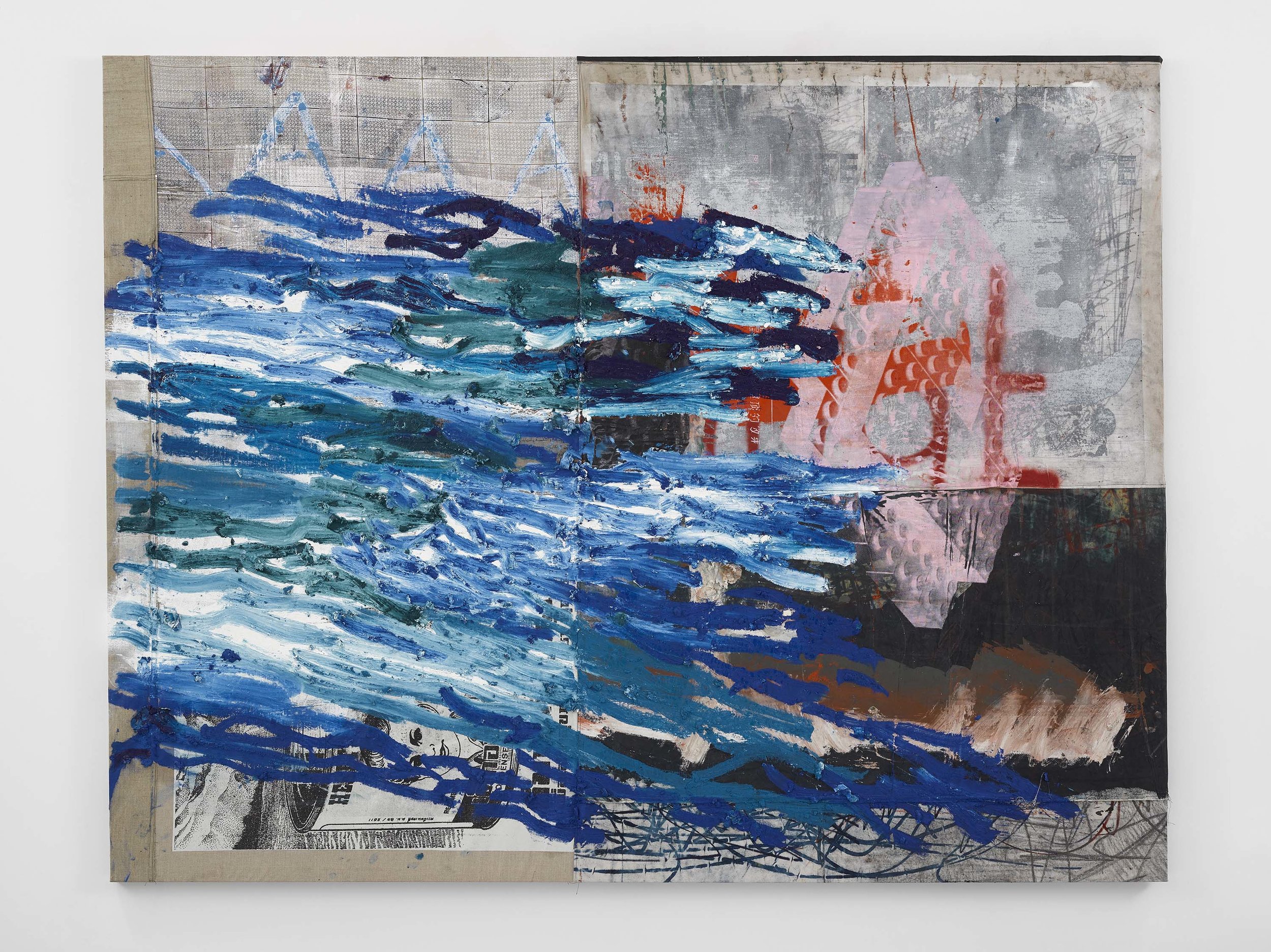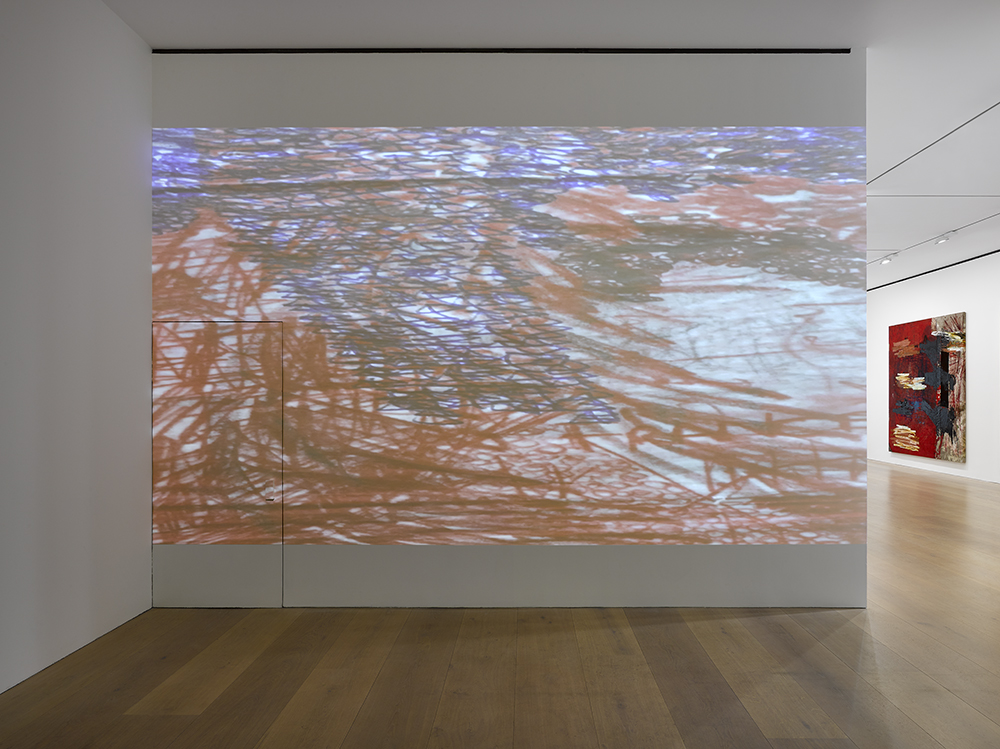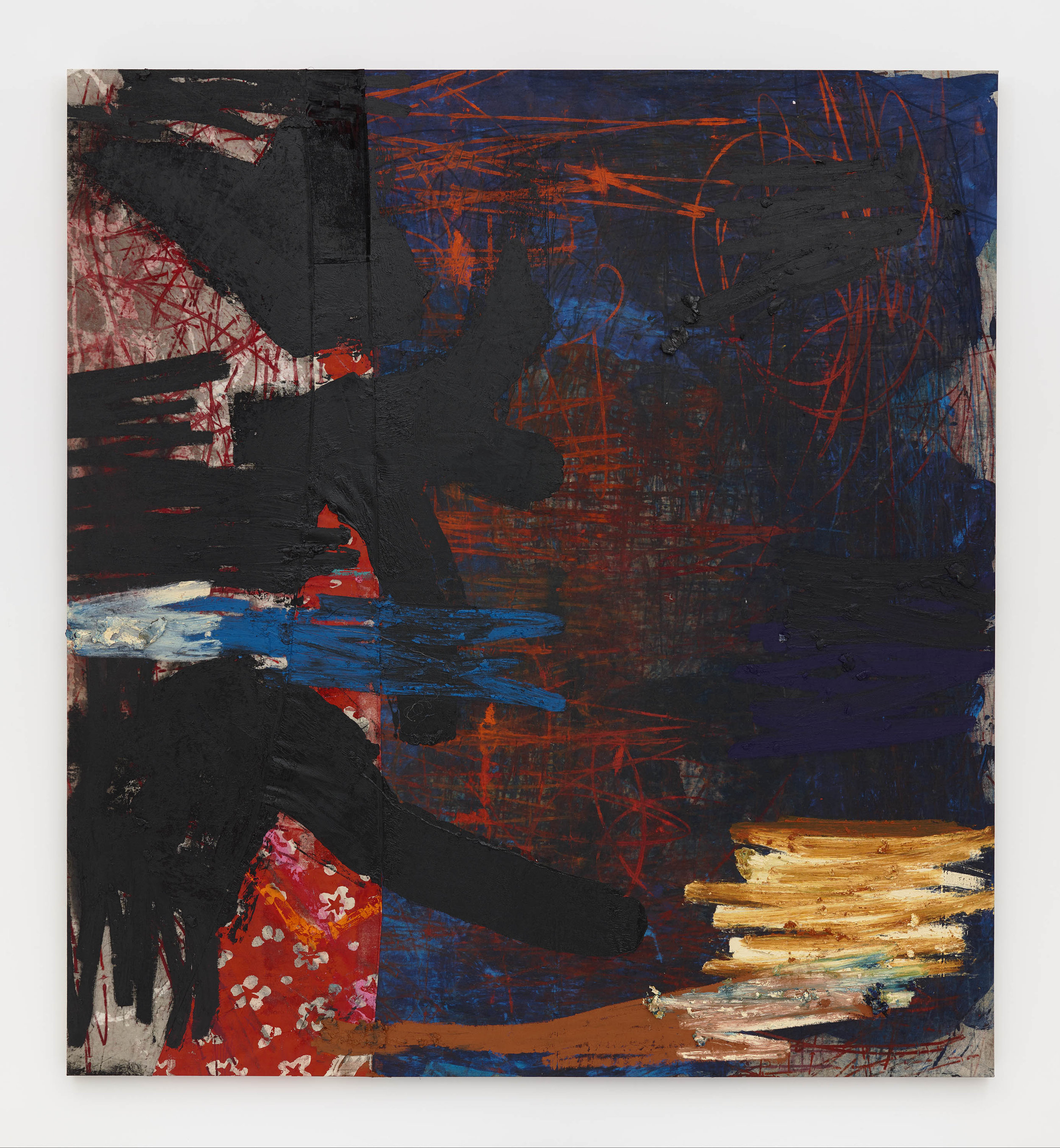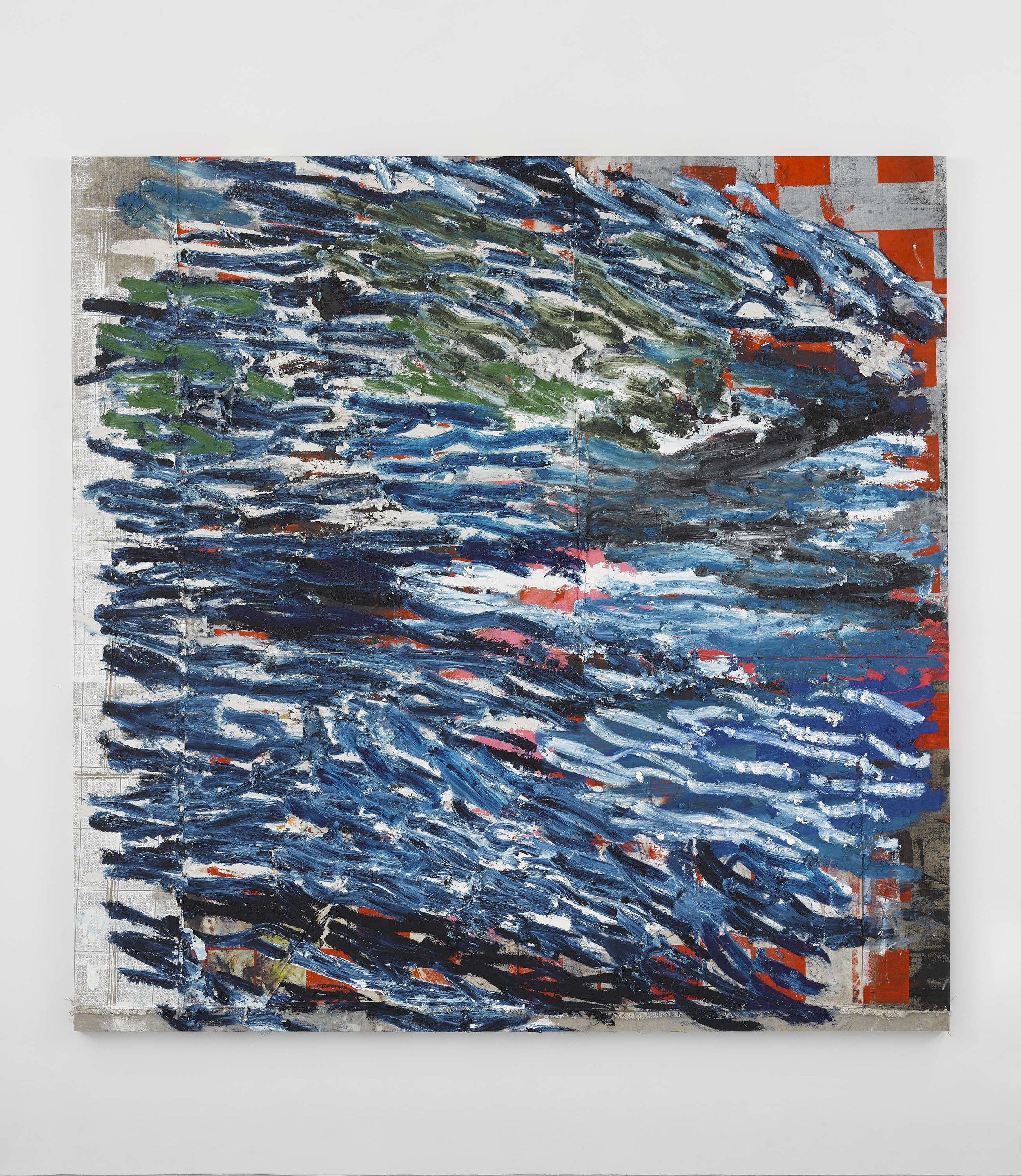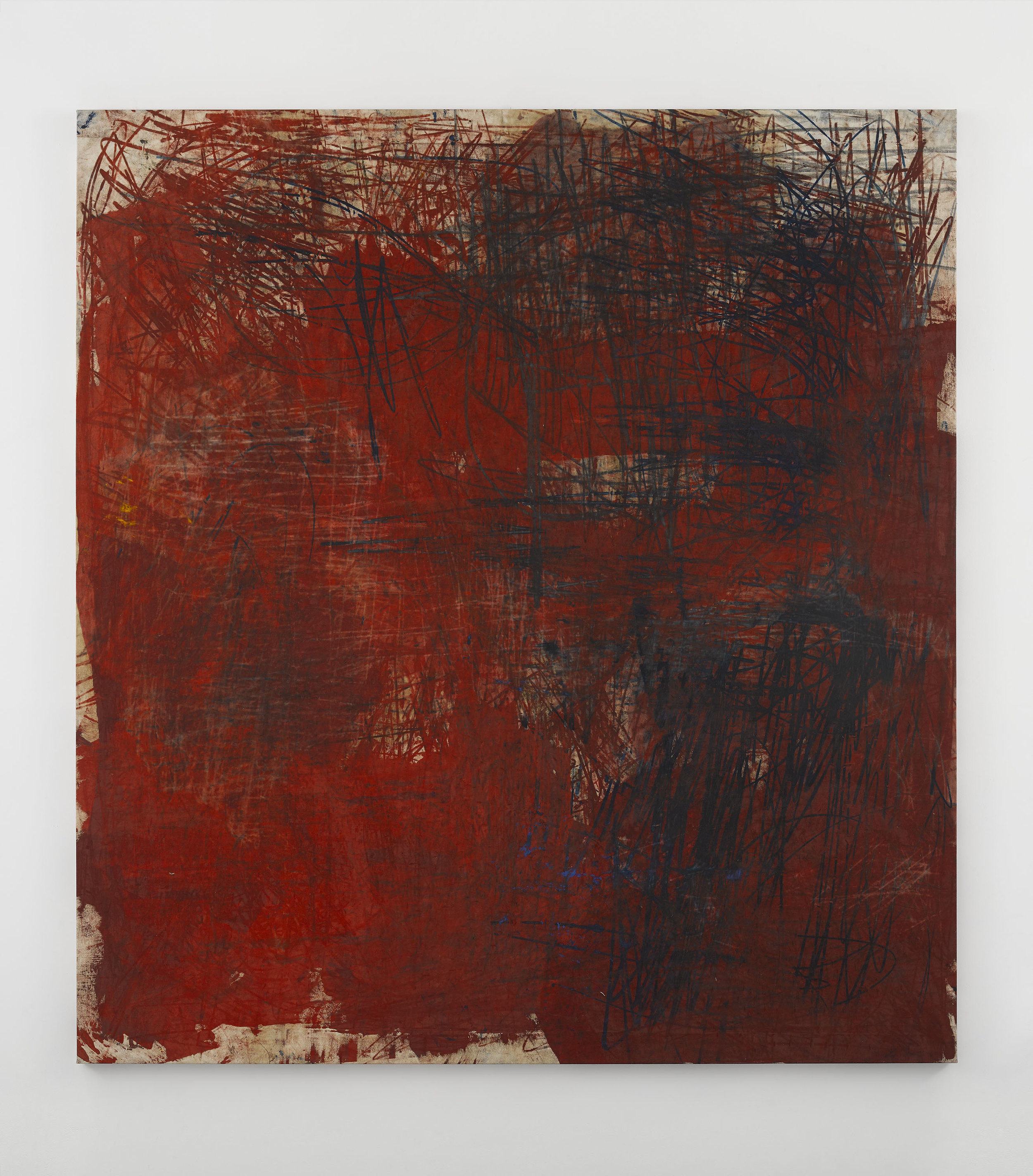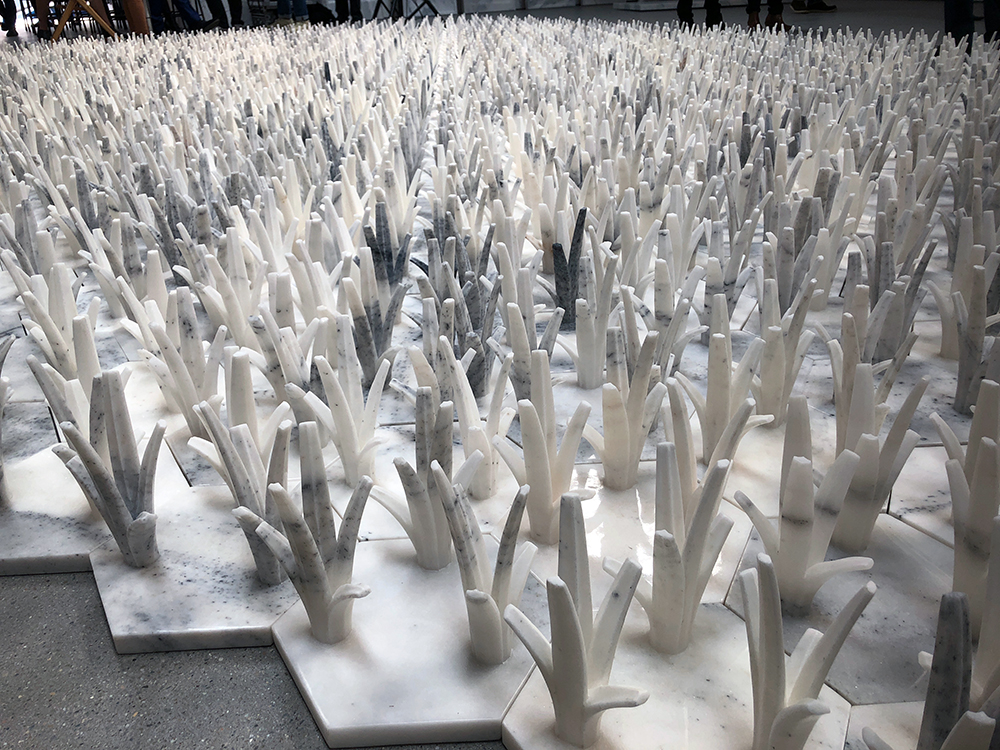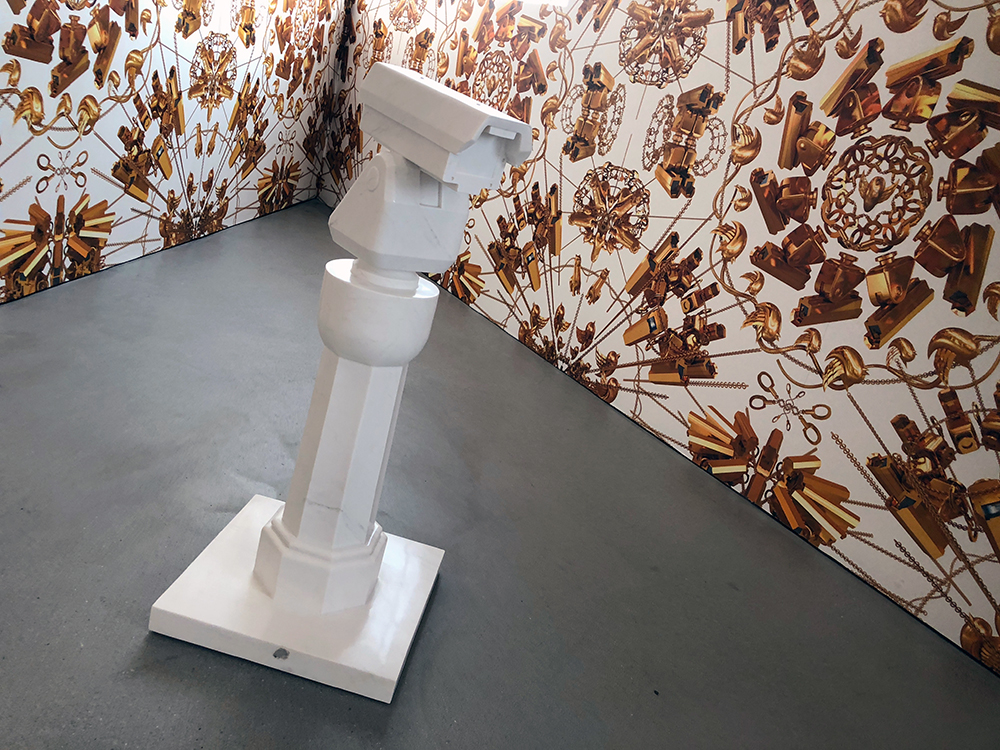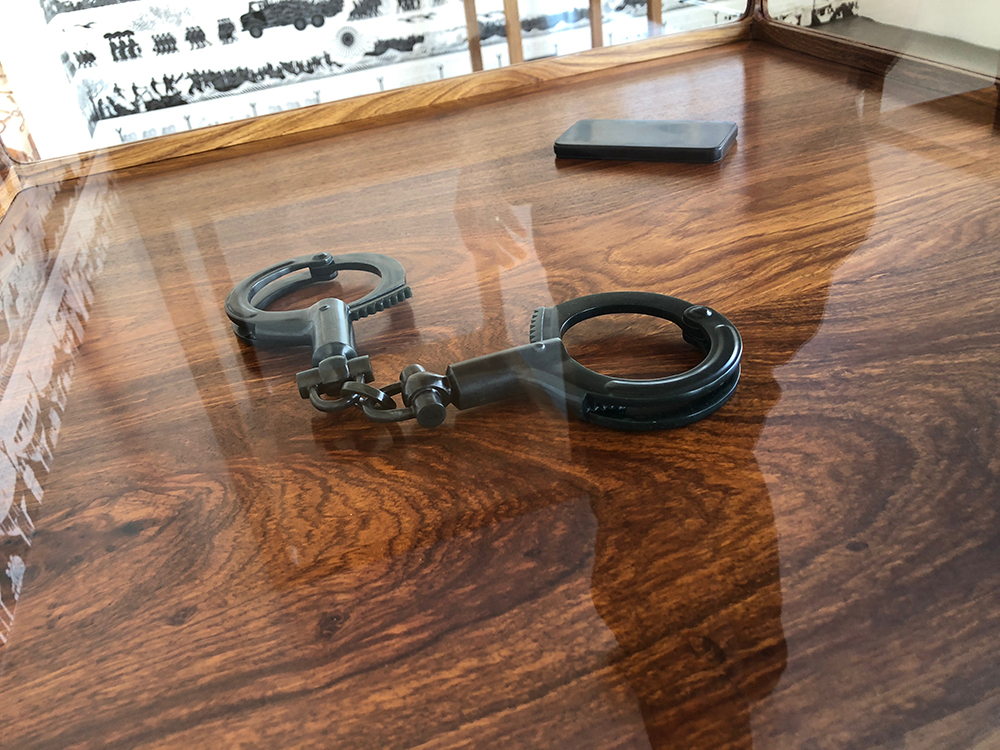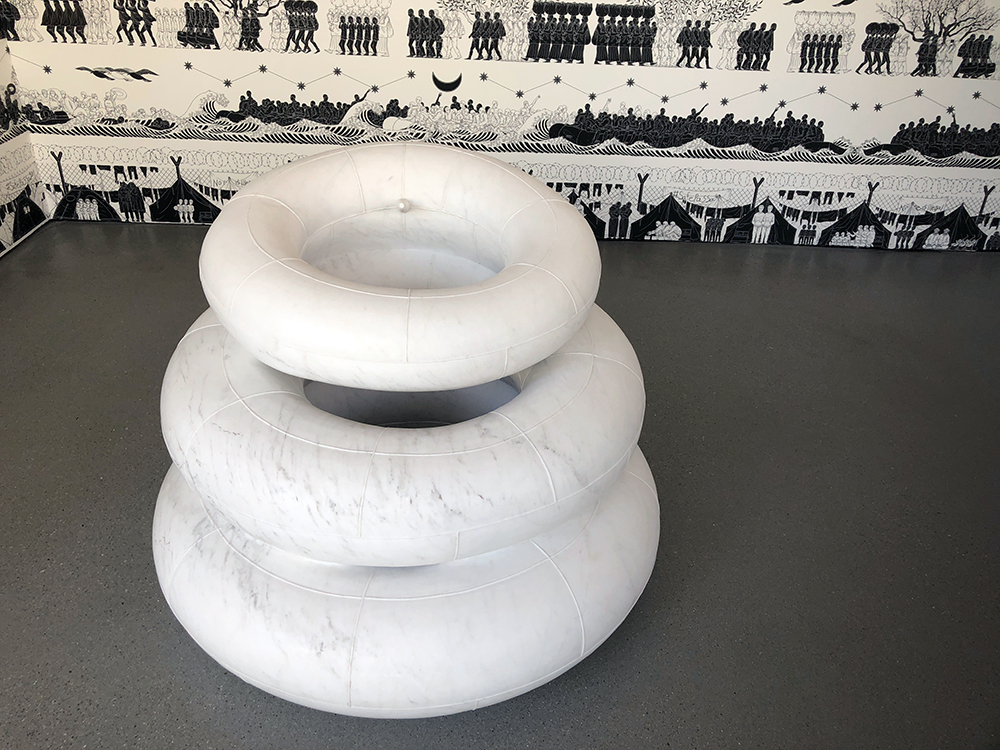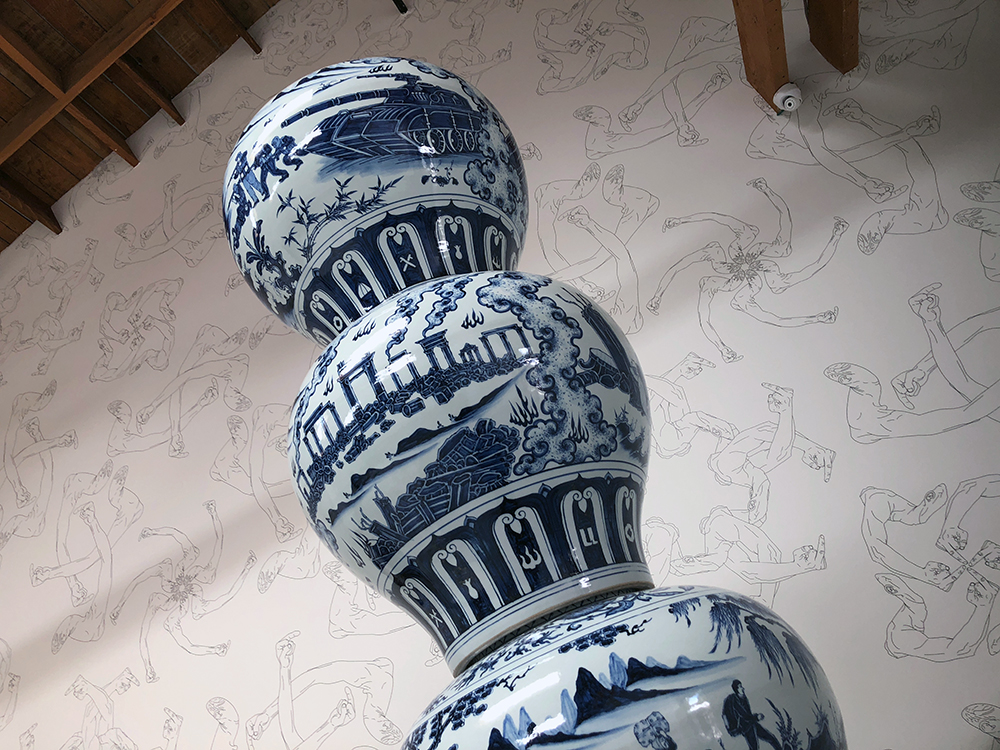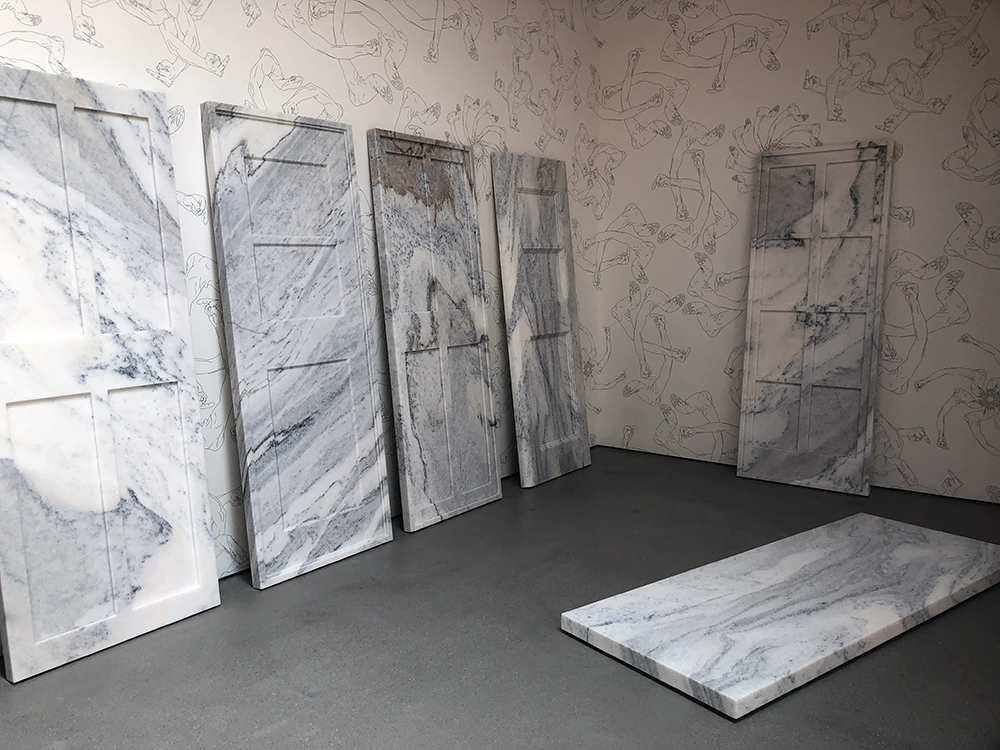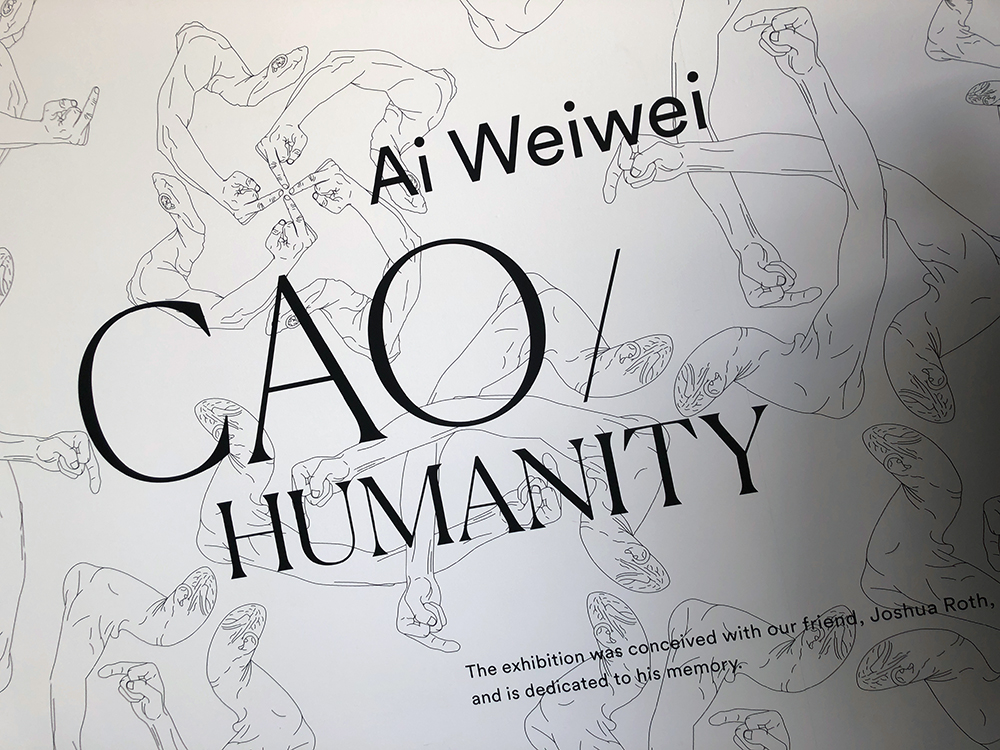Analia Saban, Flow Chart: Drawing a Hand, 2023. All images courtesy of the artist and Sprüth Magers.
text by Mia Milosevic
Analia Saban’s Synthetic Self ventures into the human instinct to quantify virtually everything. The exhibition—a unique two-part feature with different showings at Sprüth Magers and Tanya Bonakdar Gallery—encompasses nearly all aspects of technology's intersection with human civilization…from the heating of the universe to pornography. The mechanization of the world is intricately realized in her work, where minneal entities of the everyday are applied to the AI-entrenched craze of the present.
Upon entry to Sprüth Magers—the site of the first half of Saban’s exhibition–and my first encounter with her work, the contrast between black-and-white coloration seems unapproachable, sterile, even unnerving. The work is, at first glance, not captivating and evidently not meant to be—that’s not the point. As we explore the nuances of natural phenomena we are simultaneously led to blend in with it. We become embedded in the mechanics of life and come to find out that this is actually our perpetual resting state.
To the left of the entrance at Sprüth Magers are rows of tapestries, detailed and glistening with copper thread which consecutively form the same shape as the marble structure residing on the floor of each room in the exhibition—it’s a computer fan. Its intended purpose is explained by the name, but what it symbolically represents in Saban’s exhibition is the cooling of the planet and broader stratosphere. It serves to comment on what has actually become the center of our universe, and what has the power to fix it. This allegory to climate change is present throughout the entirety of the exhibition, using technology as an emblematic resource with which to further delve into the problematic nuances of society. The computer fan is also symbolic of what powers contemporary life. This specific sculpture is equal in power to the engine it depicts.
Saban seeks to replicate the encyclopedic age, invoking an omnipotent approach to nature. But there’s a lot of irony in this—she’ll never be able to define all of the variables. What characterizes this omnipotence to nature is the compulsive human tendency to quantify and define it. Saban’s work poses a multitude of questions, but seeks to answer none–this is the beauty of her work. What does it mean when a serious academic takes a selfie with a mouse filter? Saban’s work is filled with these kinds of satirical dichotomies. Her self-portrait of internet log-ins is another example of the individual identity we have inevitability entrenched in the technological realm; there’s an extreme absence of privacy, and invasive expectation to share.
Images of the quotidian are almost all wrapped in the grid overlay that is quintessential of photoshop. Upon closer inspection, these figurative panels are full of errors–extra body parts and augmented facial features. She even includes an AI-generated “deep fake” of her own face. We see the world through the lens it’s run by. Saban’s art informs everyday life in simple terms. Not one image is spared the obstruction of a technological interface—of AI’s recognizable touch. It’s interesting to see the interplay between human nature and the artificial; to see how human instinct folds into the context of the invented. Even though the human instinct Saban depicts is the urge to quantify, define, explain, understand, her work actually achieves the opposite.
Synthetic Self is reminiscent of an iPhone, with the exhibition at Sprüth Magers being the front of the phone, and the one at Tanya Bonakdar Gallery being the back. The front represents a more human aspect, pervaded mostly by our own instinctual habits. The back represents the consumption of energy; it’s the burnt out crevice of humanity and the promiscuities that are hidden in our private browser.
Upon entry to the Tanya Bonakdar Gallery, a series of computer circuits rendered in thick printer’s ink line the walls. Historical computer graphic cards are engraved with their countries of origin; this is where the natural and manmade come head-to-head. These variant computer parts highlight the global effort towards intelligent development. Embedded within each work is the irony of our reality in coexistence with worldwide industry—our rather insignificant role in the broader technological stratum becomes abundantly clear.
The very last portion of the exhibition is pornographic—incorporating one of the most provocative uses of the innovation that rules the world. Images of black-and-white penises harbor a small squarespace, all of them slightly obstructed by different forms of measurement or anatomical labeling. The involvement of measurement is at its most satirical in this context, where the urge to quantify and define appears all the more trivial. The finale of the exhibition reverberates its most intriguing purpose, which is to unveil the inner-workings of the most up-to-date status of human instinct.
Analia Saban, Cooling Rack (4 x 4), 2023.
Synthetic Self is on view through October 28 @ Sprüth Magers and Tanya Bonakdar Gallery







